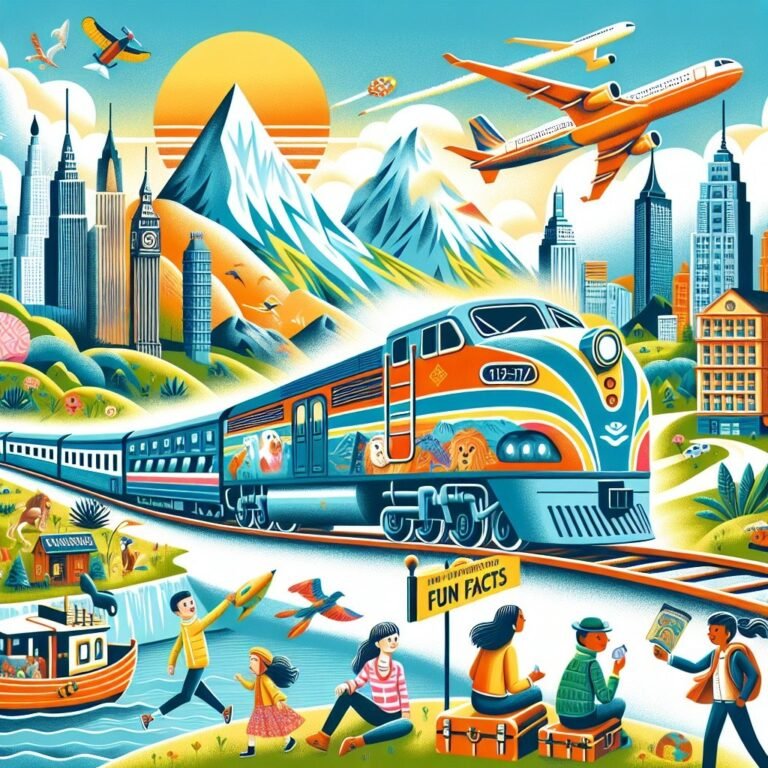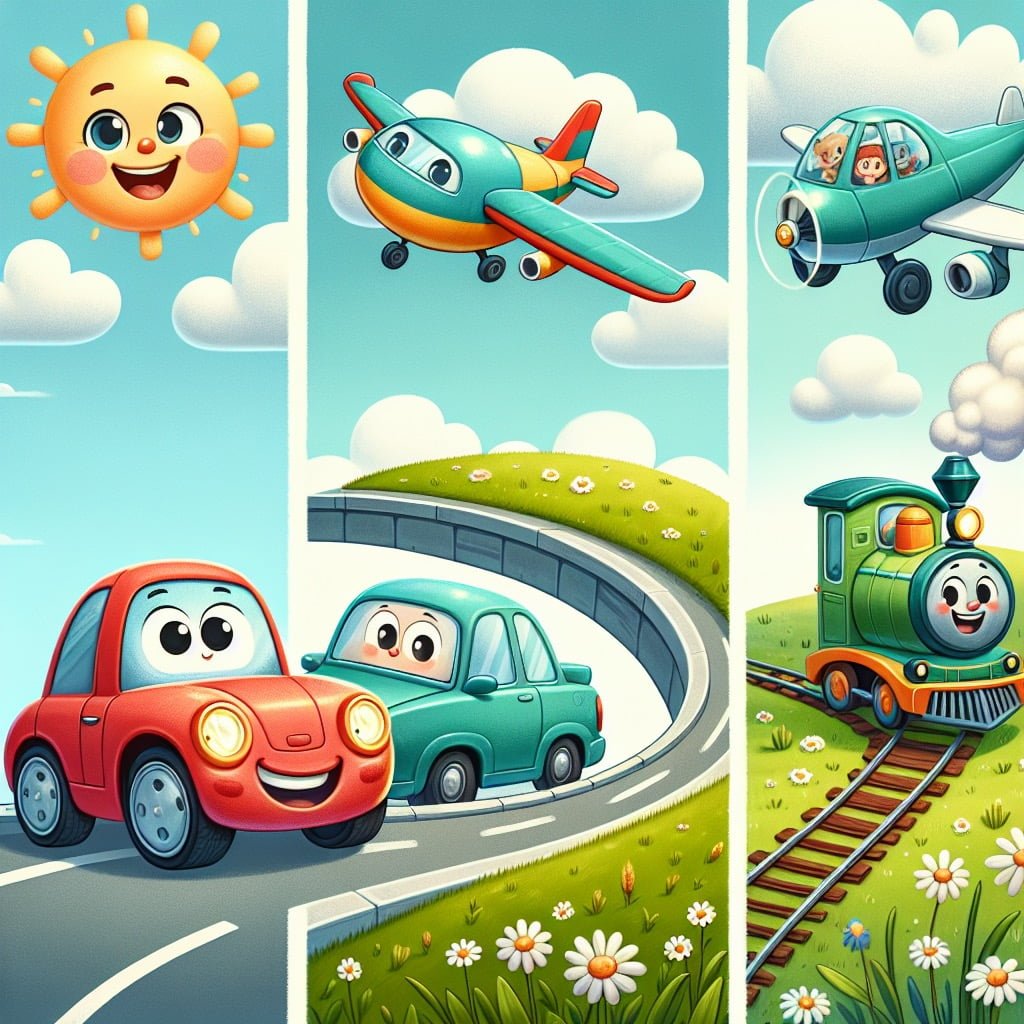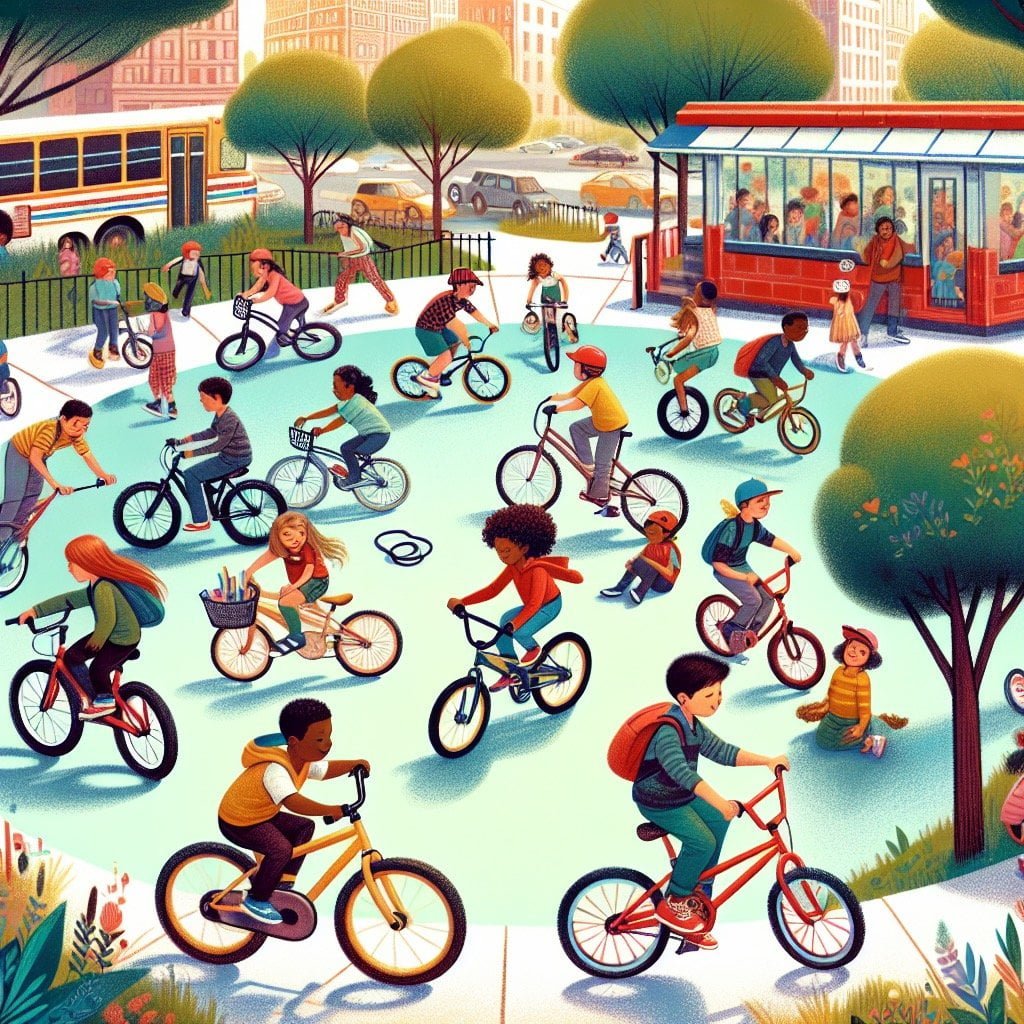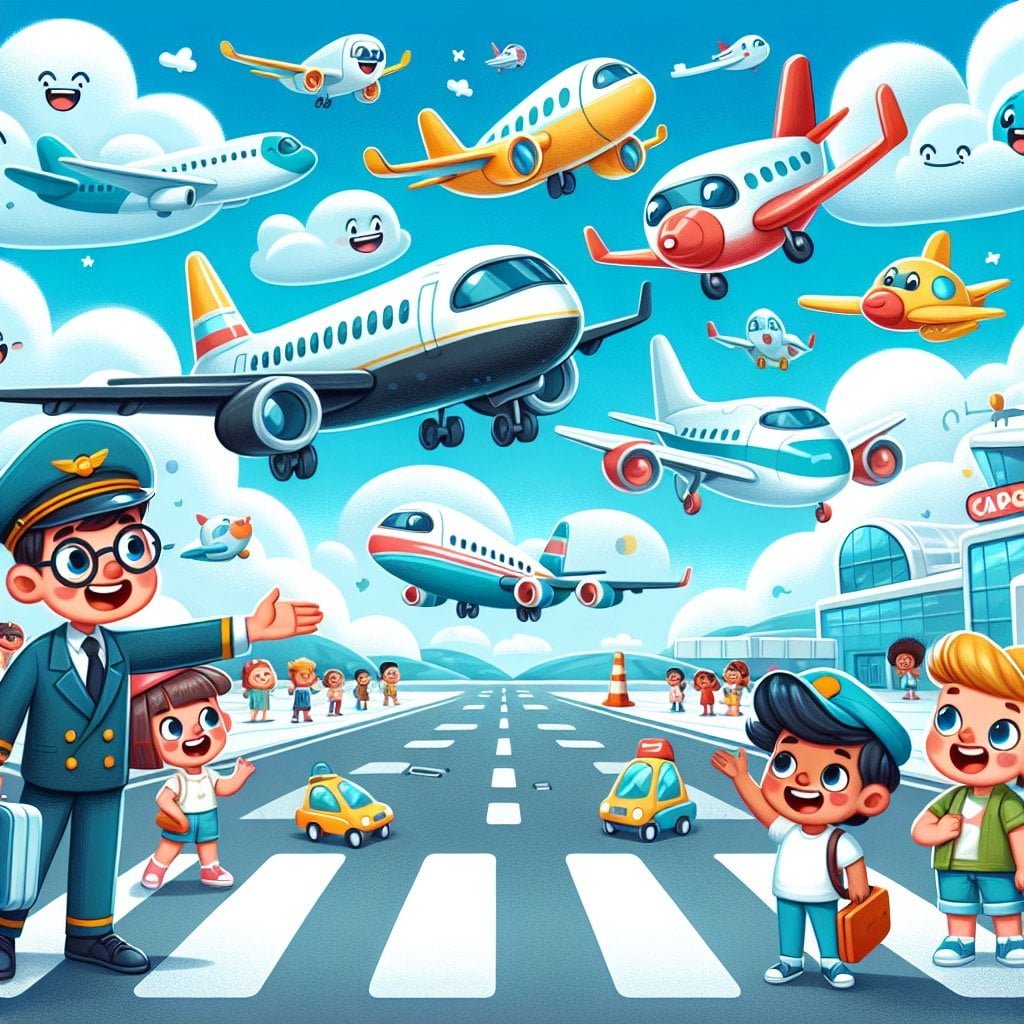Welcome to a captivating exploration of Train Facts For Kids! Trains have long been an iconic mode of transportation, captivating the hearts and minds of children and adults alike. From their impressive power to their incredible speed capabilities, trains offer a world of wonder and excitement for young enthusiasts. Join us on a journey through fascinating facts about trains, from their ability to pull hundreds of cars to their role in global trade and transportation. Delve into the rich history and engineering marvels that make trains such an essential part of our daily lives. Whether you’re a seasoned train lover or a curious explorer, there’s something for everyone in the exciting world of trains. So, hop aboard and let’s discover the magic of trains together!
Train Facts For Kids
1. Trains Can Pull Hundreds of Cars
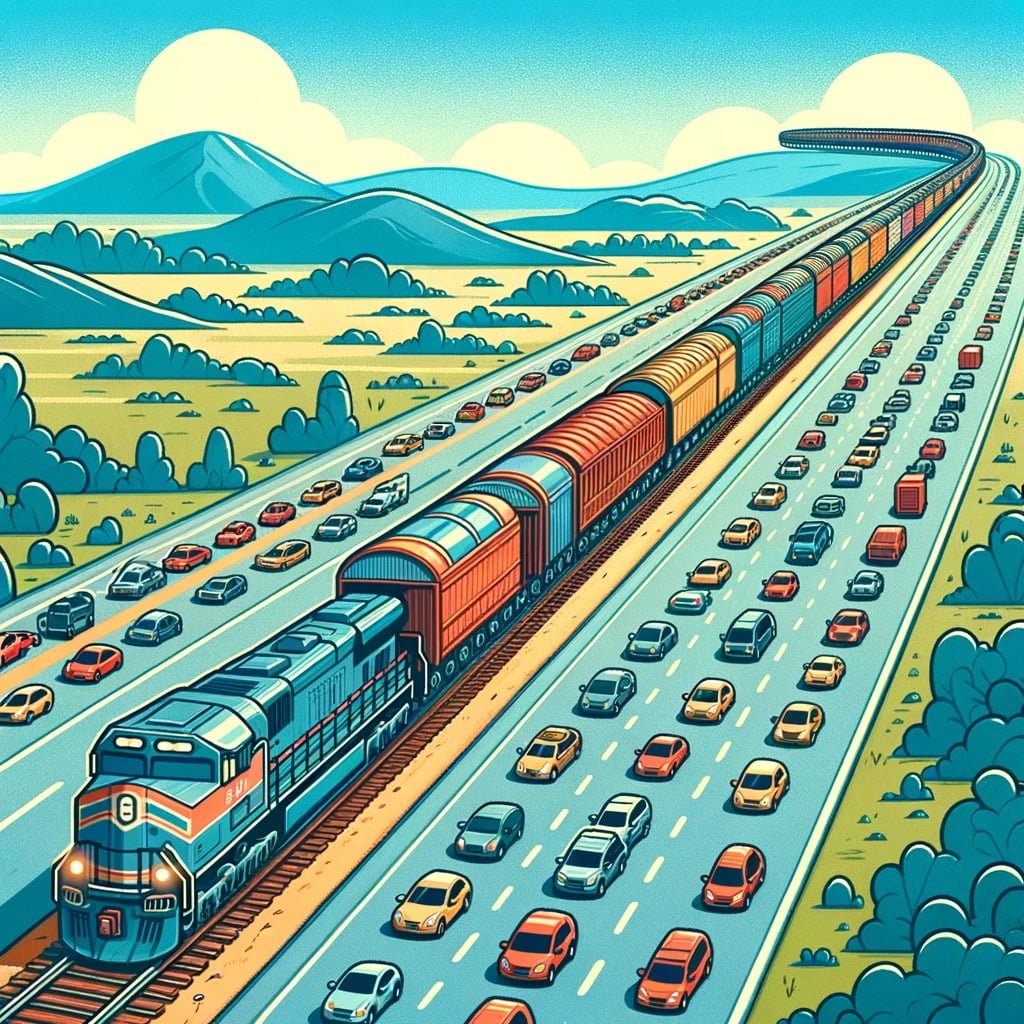
For younger kids: Trains are so strong, they can pull a lot of cars behind them, like a very long line of toys!
For older kids: Trains have enormous power and can pull hundreds of cars in a single train. This allows them to transport large amounts of cargo and people efficiently.
Detailed explanation:Trains are truly remarkable machines that are capable of pulling incredibly heavy loads. One fascinating Train Facts For Kids is that trains have the ability to pull hundreds of cars at once. This remarkable feat is made possible by the powerful engines that locomotives are equipped with.
The engine of a train is designed to generate a tremendous amount of power, which is then transferred to the wheels to propel the train forward. This power allows the train to pull multiple cars behind it, each car adding to the overall weight of the load. Despite the heaviness of the load, trains are able to move efficiently and smoothly along the tracks, thanks to their well-designed infrastructure and sophisticated technology.
The ability of trains to pull hundreds of cars is a testament to the ingenuity of engineers who have designed these impressive machines. The cars themselves are connected to each other through couplers, which allow for flexibility and smooth movement as the train navigates curves and hills along its route. Additionally, the braking systems of trains are designed to handle the added weight of a long train, ensuring safe and controlled stops when necessary.
Overall, the fact that trains can pull hundreds of cars showcases the incredible power and efficiency of these iconic modes of transportation. It is truly a marvel of engineering and something that never fails to capture the imagination of both children and adults alike.
Train Facts For Kids
2. Trains Can Travel Over 350 Miles Per Hour
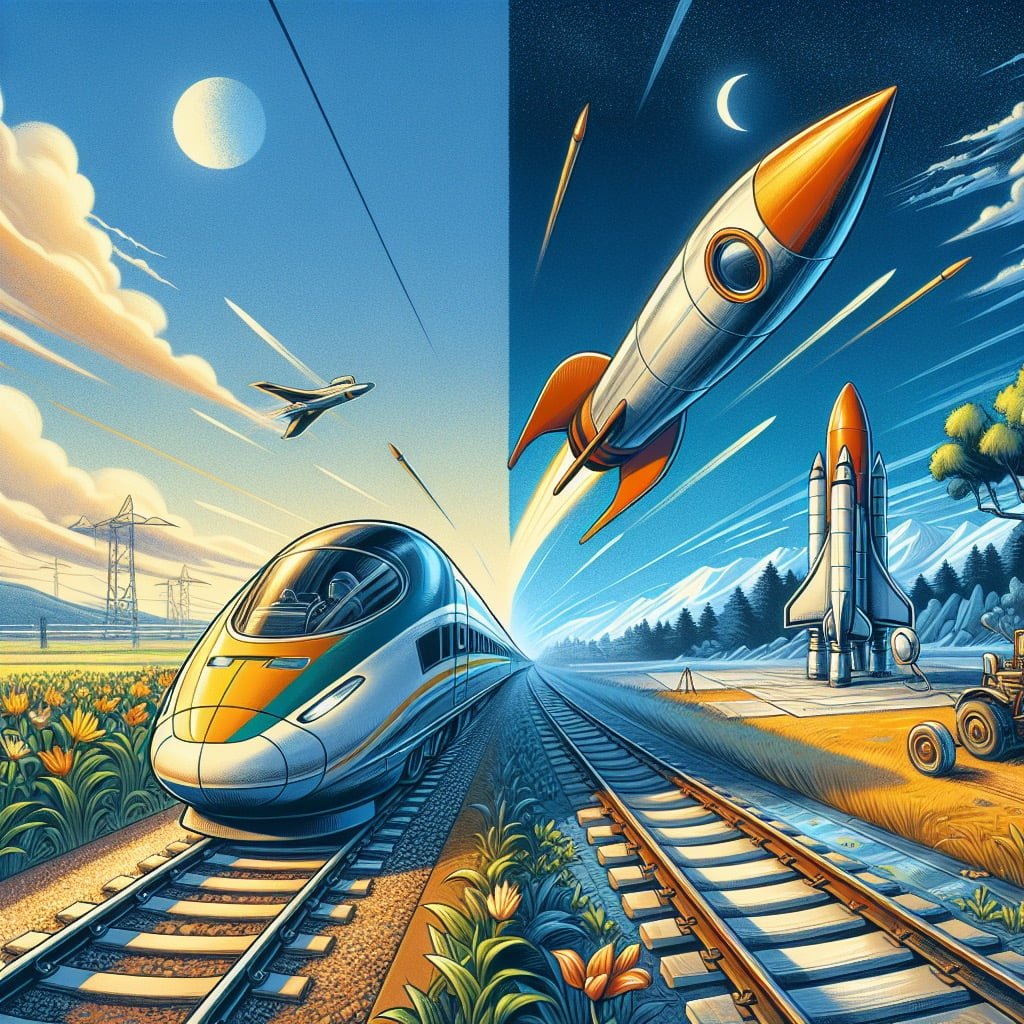
For younger kids: Some trains can go really, really fast, like a superhero zooming by!
For older kids: High-speed trains can reach incredible speeds, traveling over 350 miles per hour in some cases. This makes them one of the fastest modes of transportation on land.
Detailed explanation:Trains are incredible machines that have the capability to travel at impressive speeds. In fact, it may surprise many people to learn that trains can travel over 350 miles per hour. This high speed is made possible by advances in technology and engineering that have revolutionized the way trains operate.
One of the key factors that allow trains to reach such high speeds is the development of high-speed rail systems. These systems are specifically designed to reduce friction and air resistance, allowing trains to glide smoothly along the tracks at much faster speeds than traditional trains. Additionally, high-speed trains are equipped with powerful engines that provide the necessary force to propel them forward at such incredible speeds.
Another important factor in the ability of trains to travel over 350 miles per hour is the design of the tracks themselves. High-speed rail tracks are built with smooth, straight sections that allow trains to maintain their speed without unnecessary slowdowns. Additionally, the tracks are equipped with advanced signaling systems that help trains navigate safely at high speeds.
Overall, the ability of trains to travel over 350 miles per hour is a testament to the ingenuity and innovation of engineers and designers in the field of transportation. These incredible machines continue to push the boundaries of what is possible, providing efficient and fast transportation options for people around the world.
In conclusion, when considering Train Facts For Kids, it is important to highlight the incredible speed capabilities of trains and the technological advancements that make it possible for them to travel over 350 miles per hour.
Train Facts For Kids
3. A Train’s Whistle can be Heard for Miles
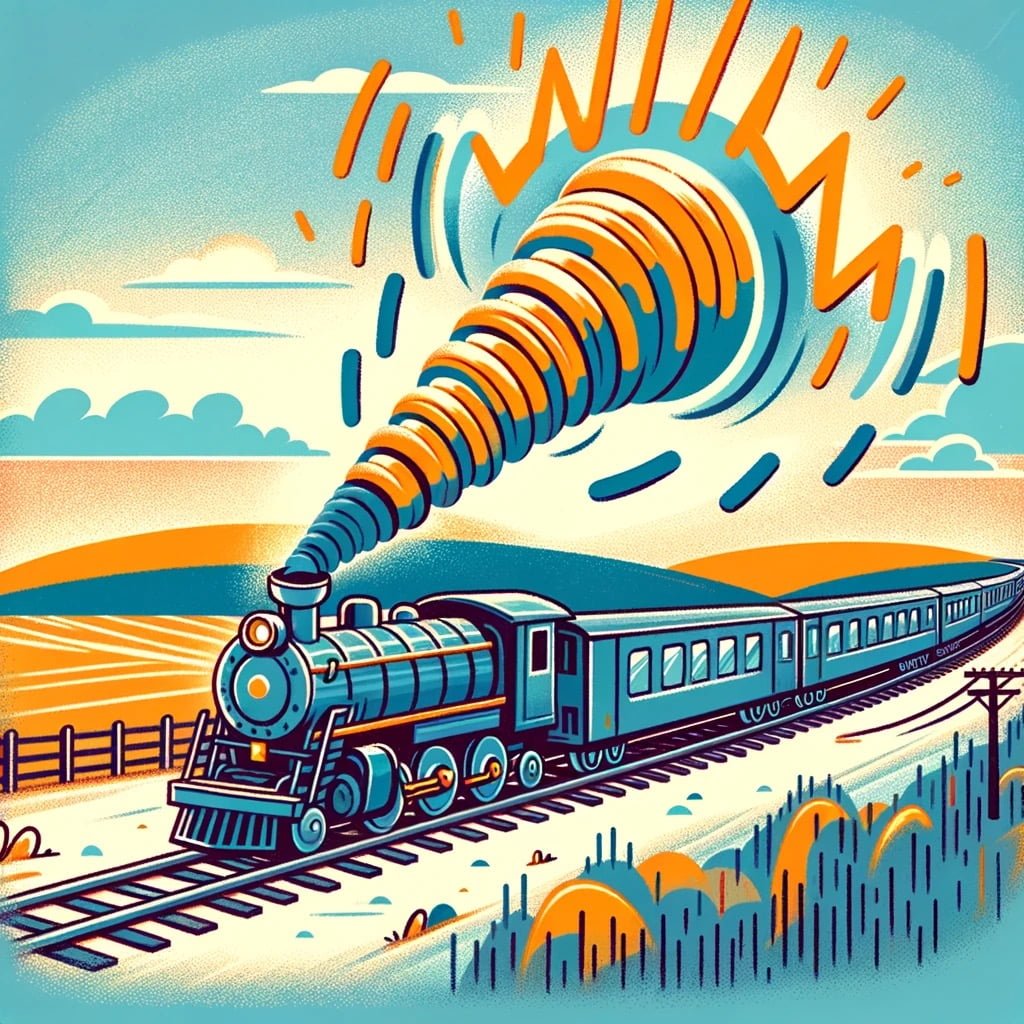
For younger kids: Trains have really loud whistles that can be heard from very far away!
For older kids: The distinctive sound of a train’s whistle can travel for several miles, serving as an important safety signal and a nostalgic reminder of travel and adventure.
Detailed explanation:Trains are fascinating machines that have been a crucial mode of transportation for both goods and passengers for centuries. One interesting aspect of trains that captivates both children and adults alike is the fact that a train’s whistle can be heard for miles. This unique characteristic of trains is not only a fun fact to share with kids, but it also serves a practical purpose in train operations.
The train whistle, also known as a train horn, is a safety device that allows the train engineer to communicate with others on the railroad tracks. The loud and distinct sound of the train whistle alerts pedestrians, motorists, and wildlife of the approaching train, helping to prevent accidents and ensure the safety of everyone in the vicinity. In addition, the train whistle is used to signal the train’s presence at railroad crossings, junctions, and other critical points along the tracks.
The sound of a train’s whistle can travel for miles because of the unique acoustics of train horns. The design of the horn, with its deep tone and specific frequency, allows the sound waves to carry over long distances without losing intensity. Additionally, the open environment of train tracks, with minimal obstruction to block the sound waves, further enables the whistle to be heard over great distances.
Overall, understanding train facts for kids, such as the impressive range of a train’s whistle, not only sparks curiosity and wonder about trains but also emphasizes the importance of safety and communication in transportation. So, the next time you hear a train whistle echoing in the distance, remember the fascinating science behind this iconic sound.
Train Facts For Kids
4. The Longest Train in the World was Over 4 Miles!
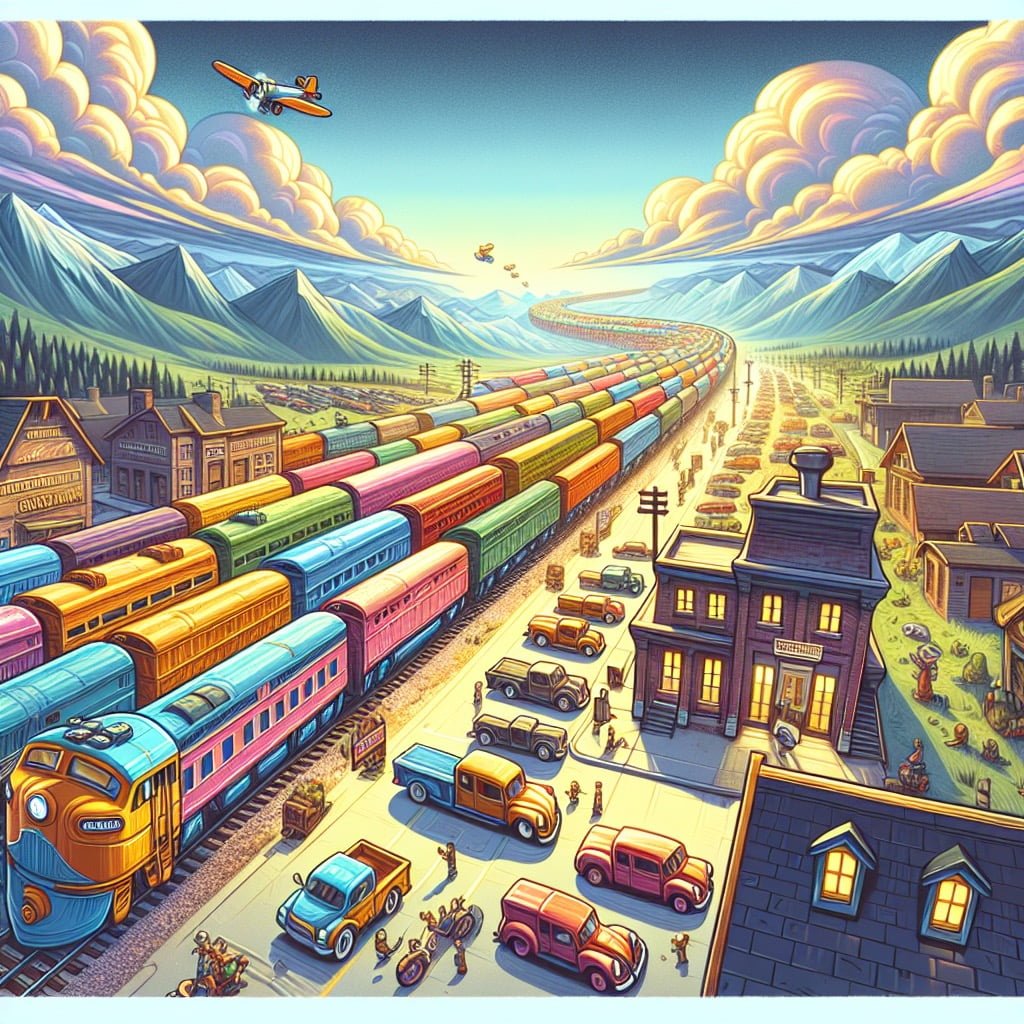
For younger kids: The longest train in the world was so long, it would take forever to count all the cars!
For older kids: The longest freight train ever was over 4 miles long, consisting of 682 cars, showcasing the incredible capacity of trains to transport goods across vast distances.
Detailed explanation:One of the most fascinating Train Facts For Kids is the record-breaking length of the longest train in the world, which stretched over 4 miles! This impressive feat of engineering showcases the incredible capabilities of modern trains and the efficiency of transporting goods over long distances.
The longest train in the world was likely a freight train, which is commonly used to transport goods such as coal, grain, and raw materials across vast distances. These trains are equipped with multiple locomotives to provide enough power to move the heavy load, as well as a large number of freight cars to carry the goods. The length of the train is limited by the amount of track available and the power of the locomotives pulling it.
The sheer size of the longest train in the world is a testament to the advancements in train technology and the importance of trains in global transportation. Trains are known for their efficiency and ability to carry large quantities of goods over long distances, making them a crucial part of the supply chain for many industries.
Overall, the record-breaking length of over 4 miles for the longest train in the world is an impressive demonstration of the capabilities of modern trains. It highlights the importance of trains in transporting goods efficiently and showcases the incredible engineering feats that can be achieved in the world of transportation.
Train Facts For Kids
5. Trains are Powered by Steam, Electricity, or Diesel
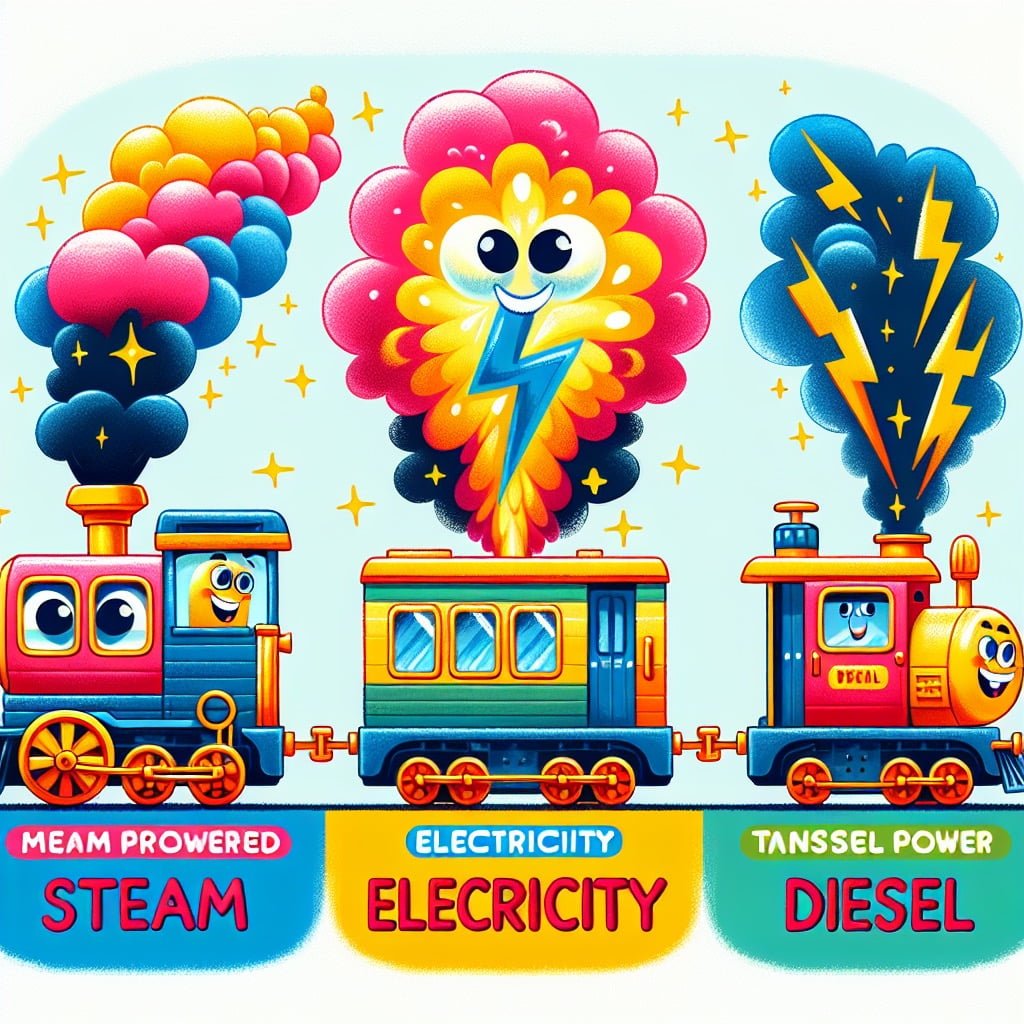
For younger kids: Trains can run on different things like steam, electricity, and even diesel fuel!
For older kids: The power sources for trains vary, including steam engines in the past, electric engines for high-speed trains, and diesel engines for many freight and passenger trains.
Detailed explanation:Trains are fascinating machines that have played a crucial role in transportation for centuries. They come in various shapes and sizes, but they all have one thing in common – they need power to operate. Trains can be powered by steam, electricity, or diesel, depending on the type of locomotive.
Steam-powered trains were one of the earliest forms of trains, dating back to the 19th century. These trains were powered by steam engines, which used boiling water to produce steam that would turn the wheels of the train. The steam engine revolutionized transportation, allowing trains to travel longer distances at faster speeds than ever before.
In more modern times, trains can also be powered by electricity. Electric trains use overhead wires or a third rail to supply power to the locomotive. This method of powering trains is more efficient and environmentally friendly than using diesel fuel. Electric trains are commonly used in urban areas for commuter trains and subways.
Diesel-powered trains are another common type of locomotive. These trains use diesel engines to generate power and move the train along the tracks. Diesel trains are versatile and can operate in a variety of environments, making them a popular choice for freight and long-distance passenger trains.
Overall, trains are powered by steam, electricity, or diesel, each providing their own set of advantages and disadvantages. Whether you are fascinated by the history of steam-powered trains or interested in the efficiency of electric trains, there is no shortage of interesting Train Facts For Kids to explore about these incredible machines.
Train Facts For Kids
6. The First Passenger Train Was in 1825
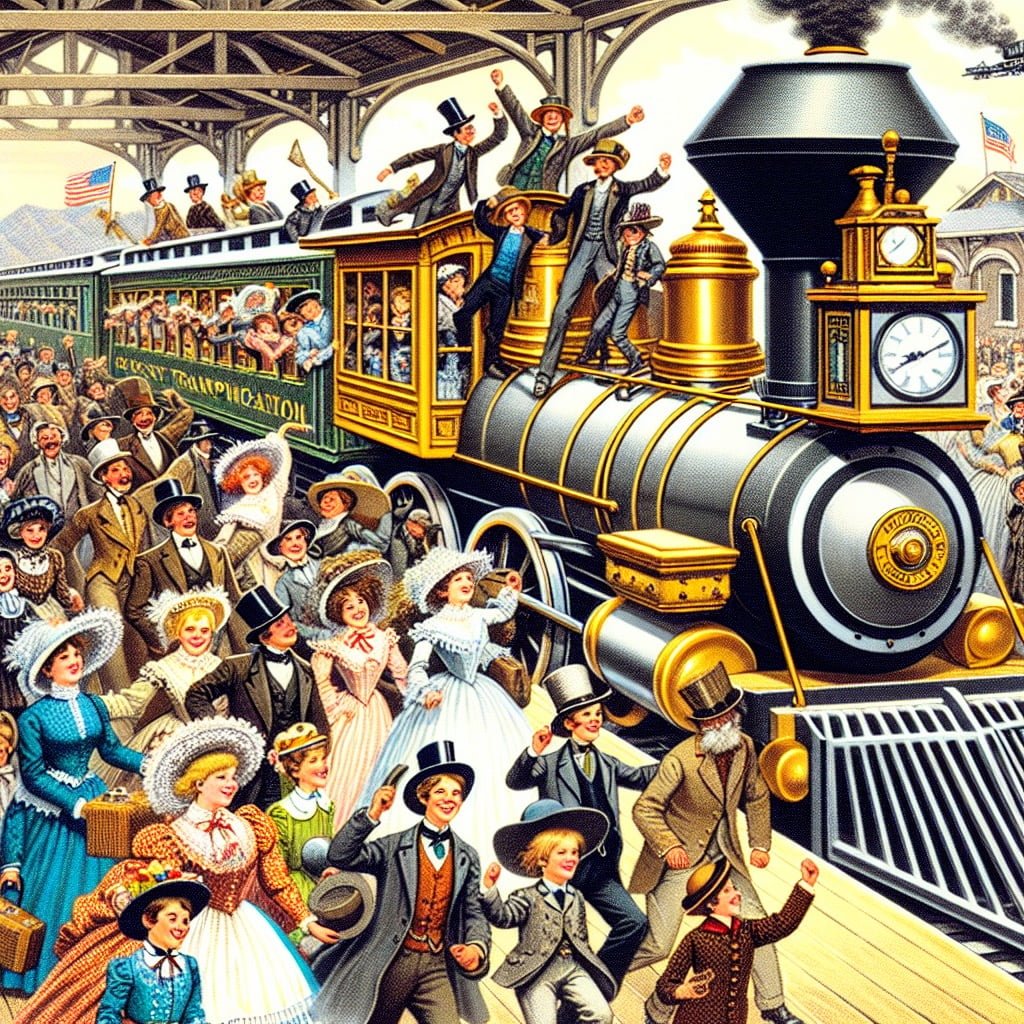
For younger kids: The first time people rode a train for fun was almost 200 years ago!
For older kids: The first passenger train, called the Stockton and Darlington Railway, began operating in 1825, marking the start of the modern railway era for transportation.
Detailed explanation:In 1825, the world witnessed a momentous occasion – the debut of the first passenger train. This event marked a significant milestone in the history of transportation, revolutionizing the way people traveled and setting the stage for the modern railway systems we know today. The historic moment took place in England, where the Stockton and Darlington Railway Company launched the first steam-powered passenger train to transport both goods and passengers.
This groundbreaking development in transportation paved the way for the rapid expansion of railways across the globe, connecting cities and regions like never before. The invention of the steam engine played a crucial role in the success of these early passenger trains, providing the necessary power to propel the heavy carriages along the tracks. As a result, travel became faster, more efficient, and accessible to a larger portion of the population.
The introduction of passenger trains in 1825 not only transformed the way people traveled, but also had a profound impact on society as a whole. It facilitated economic growth by enabling the swift transportation of goods and materials, leading to increased trade and industrialization. Additionally, it revolutionized communication and connected communities in ways previously thought impossible.
In conclusion, the debut of the first passenger train in 1825 marked a significant advancement in transportation history. This event laid the foundation for the extensive railway networks we see today, shaping the way we travel and interact with the world around us. For more fascinating Train Facts For Kids, stay tuned for upcoming articles on our blog.
Train Facts For Kids
7. Trains Can Climb Steep Hills Using Special Gear
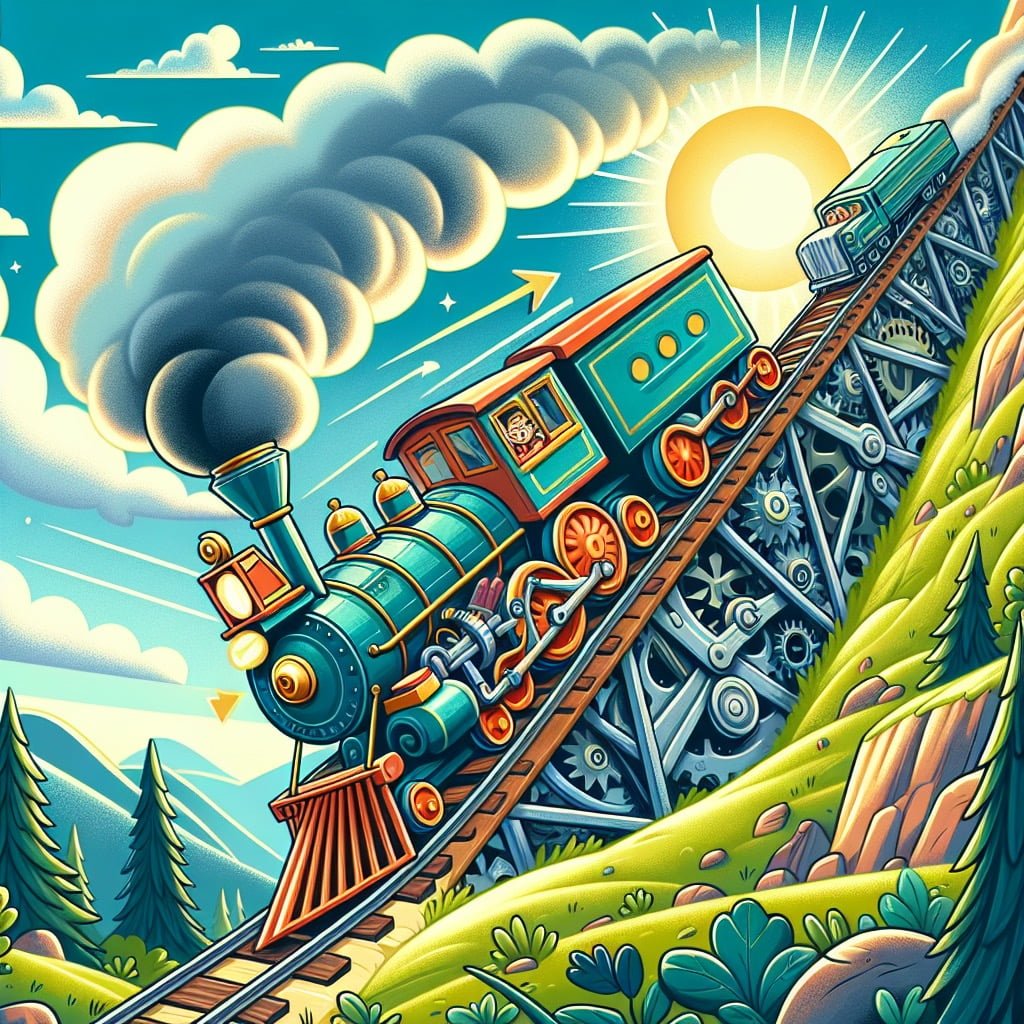
For younger kids: Trains are so clever, they have a special way to climb up really steep hills!
For older kids: Trains use a system called a cog railway to climb steep inclines by engaging a toothed rack that provides extra traction, allowing trains to conquer steep hills.
Detailed explanation:Train Facts For Kids: Trains are incredible machines that are capable of conquering steep hills with the help of special gear. This fact may seem surprising to many, but trains are equipped with powerful engines and unique mechanisms that enable them to tackle challenging terrains.
One of the key components that allow trains to climb steep hills is the use of gearing systems. Trains have specially designed gears that help them generate more power and torque, which are necessary for climbing uphill. These gears allow trains to maintain a consistent speed and traction while ascending inclines, preventing them from slipping or losing control.
Furthermore, trains also employ a technique known as “banking” or “tilting” to navigate steep hills. In this method, the train leans into the curve of the track, allowing the forces of gravity to work in its favor and assisting in maintaining stability. This technique is crucial for trains to safely ascend steep hills without losing balance or momentum.
In addition to gearing systems and banking techniques, trains also rely on the expertise of skilled engineers and conductors to navigate challenging terrains. These professionals are trained to understand the mechanics of trains and possess the knowledge and experience to operate them effectively on steep hills.
In conclusion, trains are remarkable machines that can climb steep hills with the help of special gear, techniques, and skilled personnel. By utilizing these tools and strategies, trains are able to overcome the obstacles posed by challenging terrains and continue to transport passengers and goods efficiently and safely.
Train Facts For Kids
8. Trains Have Emergency Brakes and Safety Features
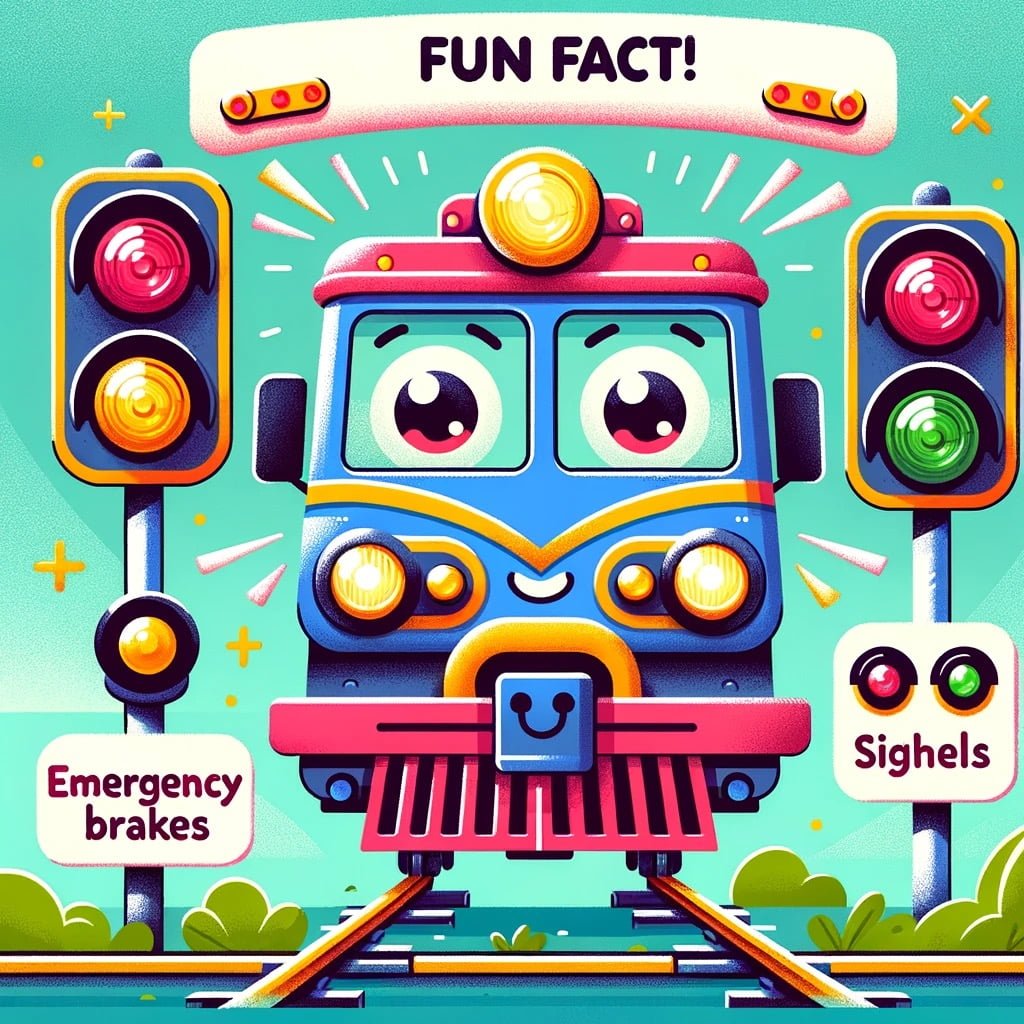
For younger kids: Trains have special brakes to stop really fast if they need to!
For older kids: Trains are equipped with advanced safety features, including emergency brakes and sophisticated signaling systems, ensuring the safety of passengers and cargo during travel.
Detailed explanation:When it comes to trains, safety is always a top priority. That’s why trains are equipped with emergency brakes and other safety features to ensure the well-being of both passengers and crew. These safety features are designed to prevent accidents and respond quickly in case of an emergency.
One of the key safety features on trains is the emergency brake system. This system allows the train driver to bring the train to a sudden stop in the event of an emergency situation, such as an obstruction on the tracks or a mechanical failure. The emergency brake system works by applying pressure to the train’s wheels, causing them to lock up and stop the train as quickly as possible.
In addition to the emergency brake system, trains also have various other safety features in place. For example, trains are equipped with automatic warning systems that alert the driver to any potential hazards on the tracks ahead. These warning systems can detect obstacles, signal malfunctions, or other issues that could pose a safety risk.
Furthermore, trains are also designed with safety measures such as fire suppression systems, emergency lighting, and emergency exits to ensure the safety of passengers in the event of an emergency. These safety features are continuously tested and updated to meet the highest safety standards.
In conclusion, trains are equipped with emergency brakes and various safety features to protect passengers, crew, and the general public. These safety measures play a crucial role in preventing accidents and ensuring the safe operation of trains. Next time you hop on a train, rest assured that it is equipped with the necessary safety features to keep you safe. That’s why it’s important for both kids and adults to be aware of these Train Facts For Kids.
Train Facts For Kids
9. The Trans-Siberian Railway is the Longest in the World
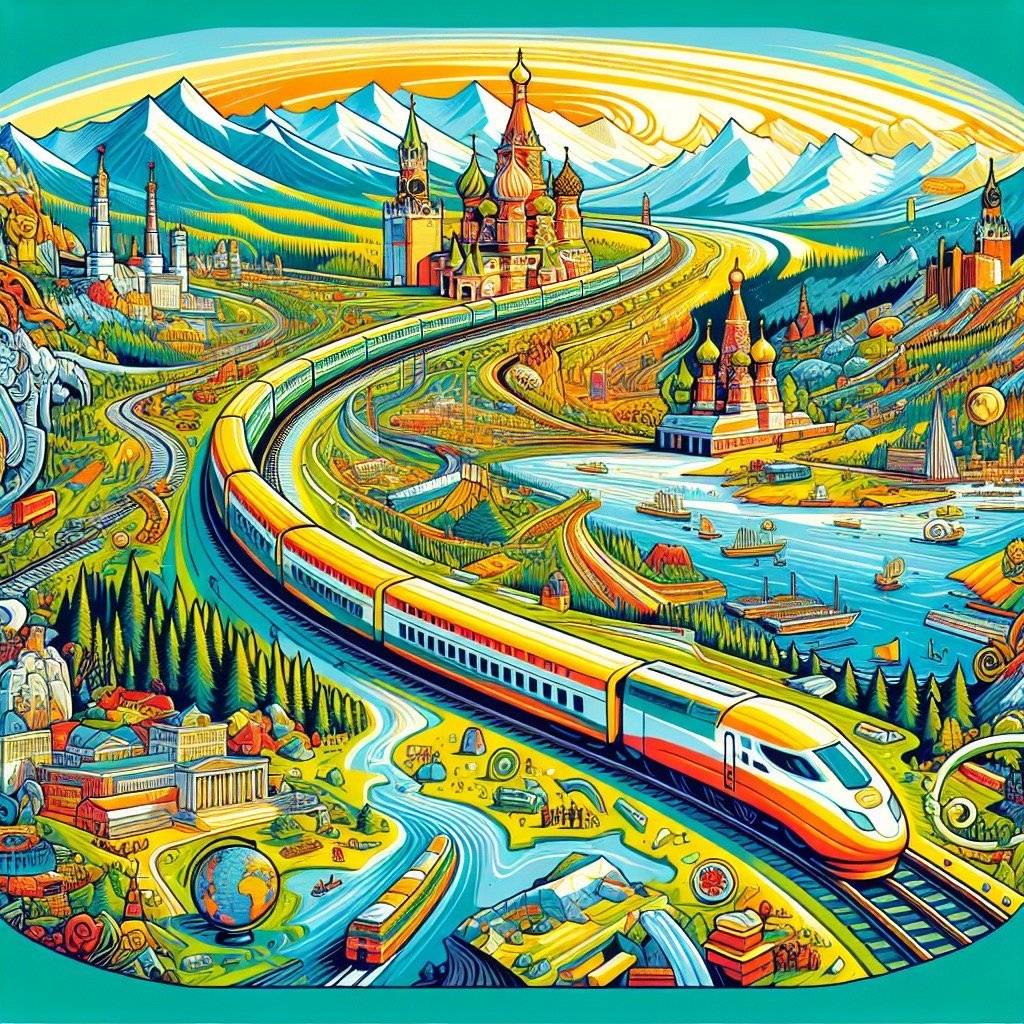
For younger kids: There’s a super long train track called the Trans-Siberian Railway that goes across a whole country!
For older kids: The Trans-Siberian Railway is the world’s longest railway, spanning over 5,700 miles and connecting Moscow with Vladivostok, offering an incredible journey through Russia.
Detailed explanation:The Trans-Siberian Railway is truly a marvel of engineering and logistics. Spanning a vast distance of over 9,000 kilometers, this railway is the longest in the world. Stretching from Moscow in the west to Vladivostok in the east, the Trans-Siberian Railway passes through multiple time zones and diverse landscapes, offering passengers a unique and unforgettable journey through the heart of Russia.
One of the most fascinating Train Facts For Kids is that the construction of the Trans-Siberian Railway began in 1891 and was completed in 1916. The project required the labor of thousands of workers and presented numerous challenges, including harsh weather conditions, rugged terrain, and scarce resources. Despite these obstacles, the railway was successfully built and has since become an essential mode of transportation for both passengers and freight in Russia.
The Trans-Siberian Railway is not just a transportation route, but also a cultural icon. It has been featured in numerous films, books, and songs, capturing the imagination of people around the world. Traveling on the Trans-Siberian Railway offers passengers the opportunity to experience the vastness and beauty of Russia, as well as the chance to interact with locals and learn about the country’s rich history and traditions.
Overall, the Trans-Siberian Railway is a testament to human ingenuity and determination. Its sheer length and scope make it a remarkable feat of engineering and a must-see destination for anyone interested in train travel or exploring the wonders of Russia.
Train Facts For Kids
10. Trains Contribute to Global Trade and Transportation
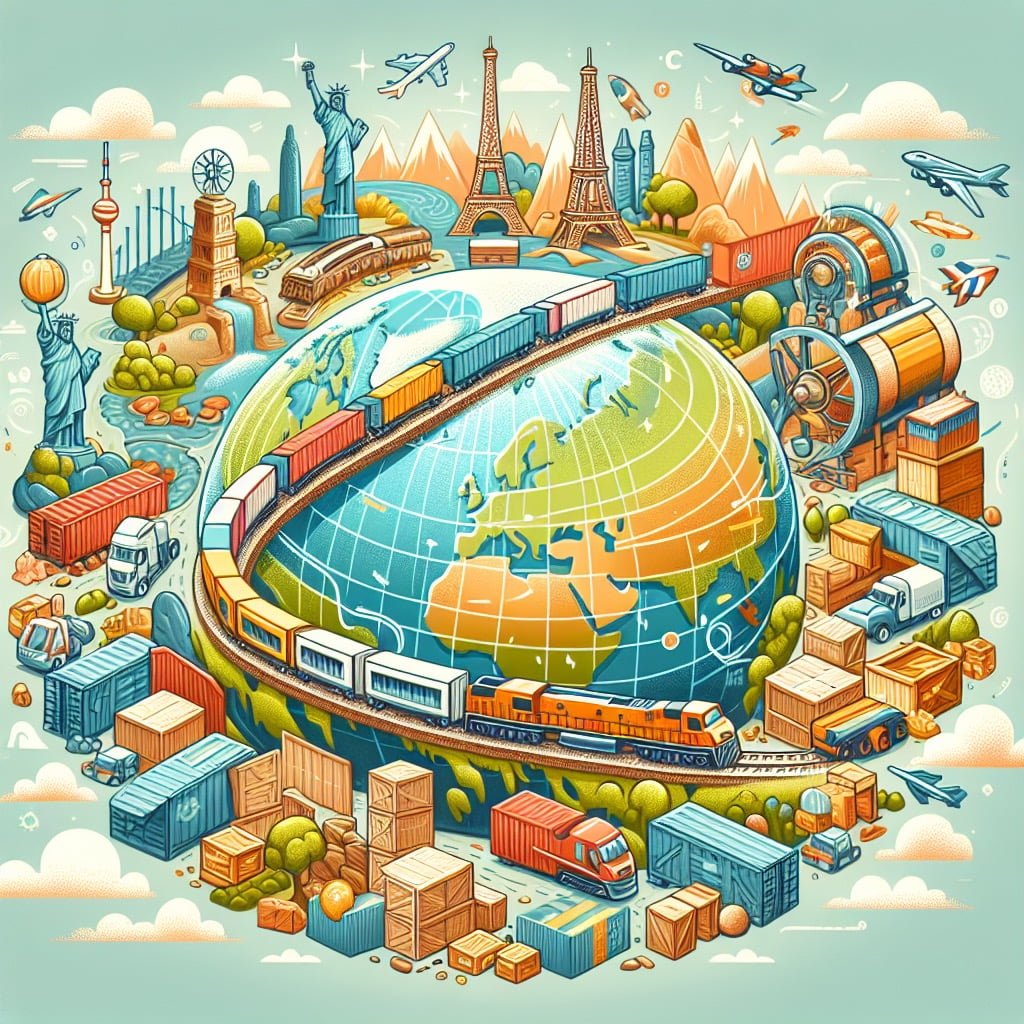
For younger kids: Trains help bring toys, food, and lots of other things from far away to our town!
For older kids: Trains play a vital role in global trade, transporting goods and resources across continents, supporting industry, commerce, and the economy on a worldwide scale.
Detailed explanation:One of the most fascinating Train Facts For Kids is that trains play a crucial role in global trade and transportation. Trains have been a vital mode of transportation for goods for centuries, connecting various cities, countries, and continents.
Trains are used to transport a wide range of goods, from raw materials to finished products, across vast distances quickly and efficiently. They are especially important for transporting goods that are heavy or bulky, such as coal, grain, and automobiles. Trains can carry a large amount of cargo at once, making them a cost-effective and environmentally friendly mode of transportation.
In terms of global trade, trains are essential for connecting industrial centers with ports and other transportation hubs. They help facilitate the movement of goods between different regions and countries, allowing businesses to access a wider market and consumers to enjoy a greater variety of products.
Furthermore, trains are a key component of supply chains, ensuring that goods reach their destinations on time and in good condition. They also play a critical role in supporting industries such as manufacturing, agriculture, and mining by allowing for the efficient transport of materials and products.
In conclusion, trains are an integral part of global trade and transportation, serving as a reliable and efficient way to move goods across long distances. Their importance in connecting economies and facilitating the flow of goods makes them a vital component of the modern world.
Did You Know?
Trains were a crucial factor in the expansion and development of many countries and continue to be a vital part of modern transportation networks, connecting people and places across the globe.
Summary of Train Facts For Kids
All aboard the train facts express! Delve into the fascinating world of trains with our blog post dedicated to sharing fun and exciting information about these incredible machines. Whether you’re a train enthusiast or just curious to learn more, there are countless reasons to explore the history, technology, and impact of trains on society.
From the first passenger train running in 1825 to the impressive engineering feats of building railroads connecting nations, trains have played a crucial role in shaping the way we travel and transport goods. Discover captivating facts, such as the longest train ever recorded being over 7 miles long or the innovative advancements in speed, efficiency, and safety.
By learning about trains, not only can you spark your curiosity and imagination, but you can also gain valuable insights into the importance of innovation and problem-solving. Explore how trains have revolutionized transportation, connected cities, and opened up new opportunities for trade and travel.
In a world driven by technology and rapid advancements, trains stand as a symbol of endurance and progress. By delving deeper into the world of trains, you can appreciate the ingenuity and creativity that goes into creating these remarkable machines. So, come along for the ride as we journey through time and technology, uncovering the wonders of trains and the endless possibilities they hold. All aboard for an adventure through the fascinating world of train facts for kids!
Sources and additional information for Train Facts For Kids
WikipediaBritannicaNational Transportation Safety BoardFederal Aviation AdministrationNational Railroad Passenger Corporation (Amtrak)The Automobile Association (AA)BoeingCar and DriverAirbusTrainWebAuto ExpressAviation Week NetworkNational Air and Space MuseumDiscovery ChannelHowStuffWorksPopular MechanicsScience ChannelNational Railroad MuseumInternational Civil Aviation OrganizationAmerican Automobile Association (AAA)
